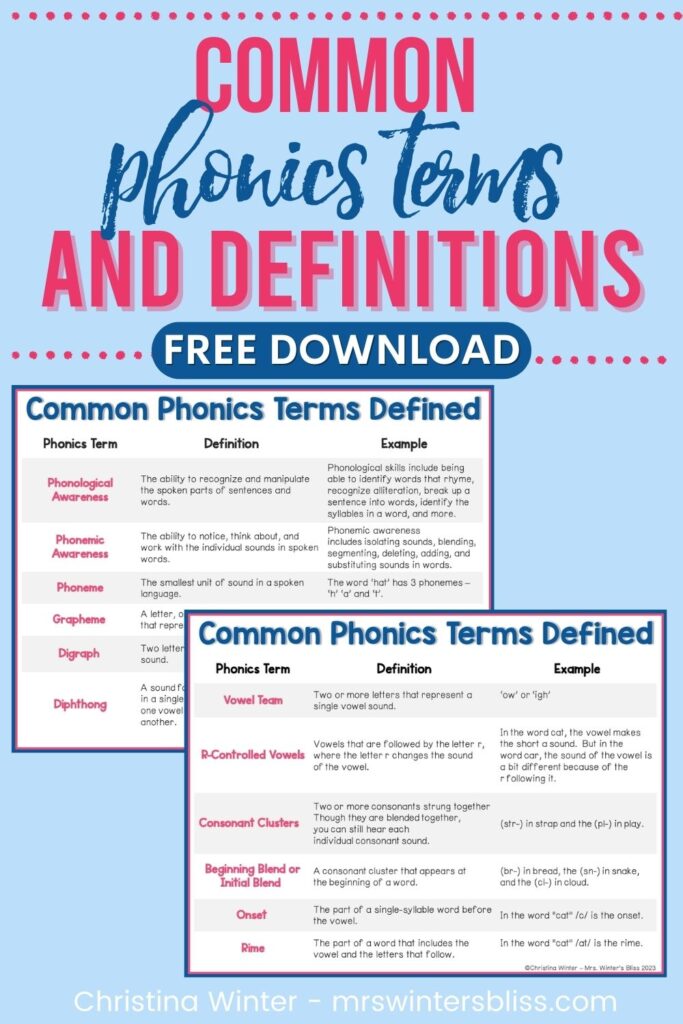
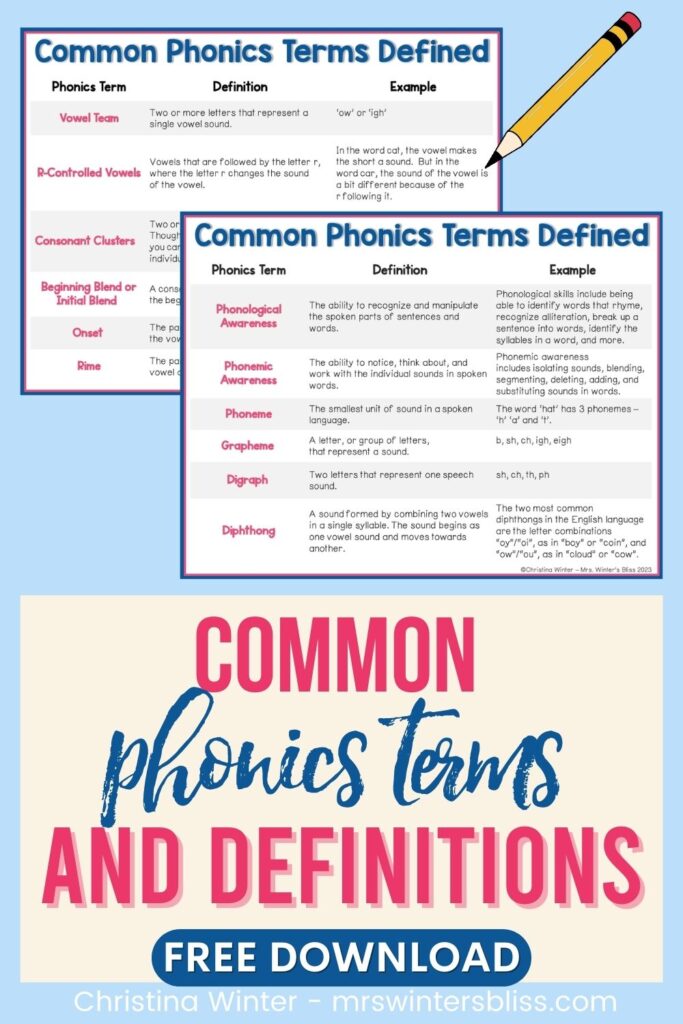
The science of reading tells us that explicit phonics instruction helps students to become fluent, successful readers. In this post, I provide you with clear and concise definitions for the most common phonics terms you will encounter when teaching students phonics. I also offer a FREE downloadable Phonics Terms Cheat Sheet that makes a great reference for teachers and is helpful information to share with families.
All around the world, teachers are changing the way they teach children to read. The science of reading has many of us moving away from balanced literacy toward a structured literacy approach. While this shift is a wonderful thing, it requires a lot of new learning for teachers.
I know many of you were not taught about the science of reading and the importance of explicit phonics instruction in your pre-service training. You are learning on the job and that is hard! There are new methods and a LOT of new terms to understand. It is a lot to keep straight!
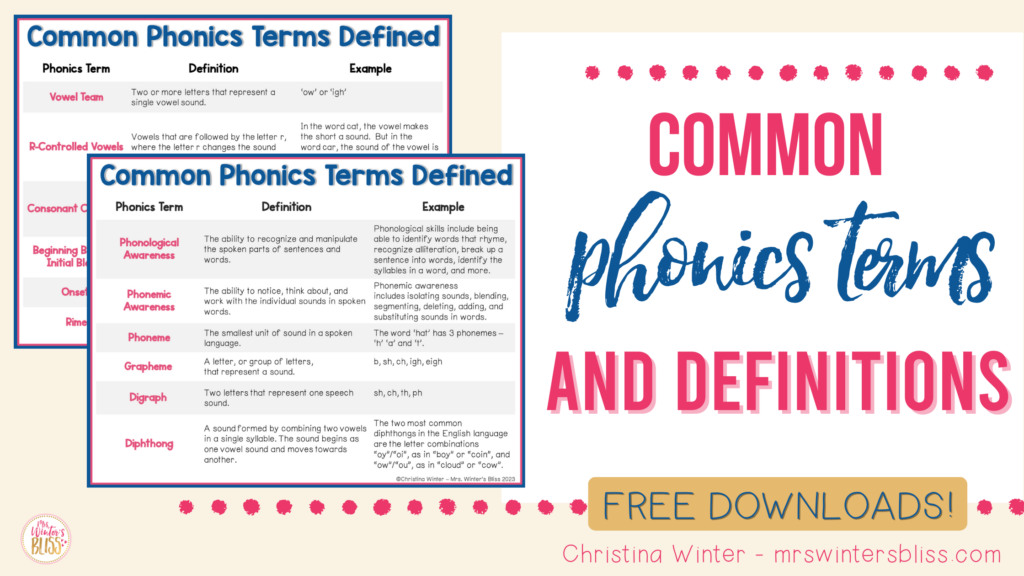
Today I want to help you by providing you with clear and concise definitions for the most common terms you need to know when teaching phonics. I’ll also offer you a FREE phonics terms cheat sheet. It makes a perfect quick reference for you and your colleagues and is great information to share with families.
Phonics vs. Phonological Awareness vs. Phonemic Awareness
These terms sound very similar and often get used interchangeably, but they are not the same thing. Let’s take a closer look at each one and understand how they are connected…
What is Phonological Awareness?
Phonological awareness is the ability to recognize and manipulate the spoken parts of sentences and words. It is an umbrella term that involves a continuum of skills that students develop over time. These skills include being able to identify words that rhyme, recognizing alliteration, breaking up a sentence into words, identifying the syllables in a word, and more. The most sophisticated — and last to develop — is called phonemic awareness.
What is Phonemic Awareness?
Phonemic Awareness is the ability to notice, think about, and work with the individual sounds in spoken words. This includes isolating sounds, blending, segmenting, deleting, adding, and substituting sounds in words.
What is Phonics?
Phonics is where phonological awareness and phonemic awareness come together with writing and looking at letters. Phonics is matching sounds to written letters that represent that sound.
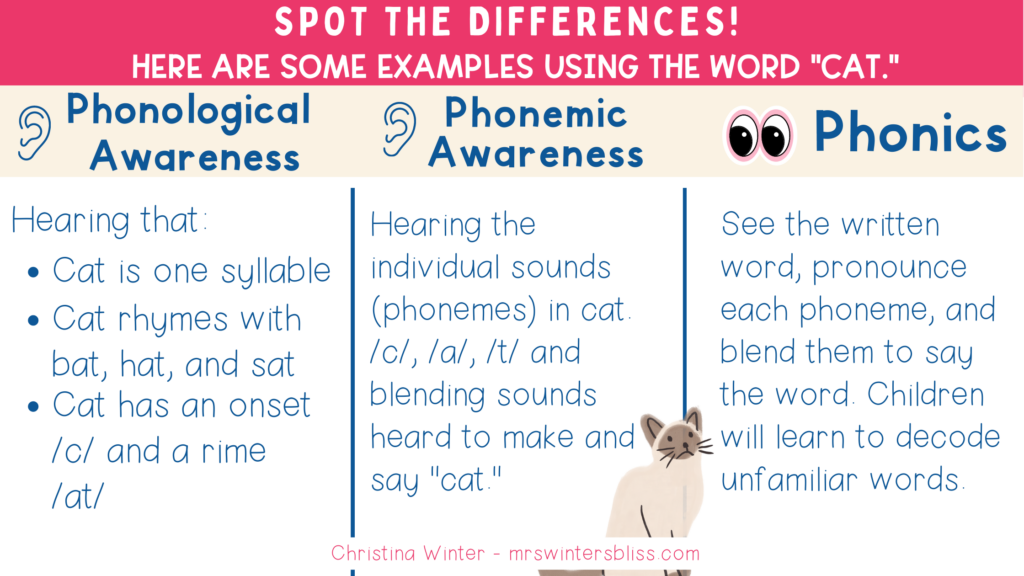
Common Phonics Terms Defined
Phoneme: The smallest unit of sound in our spoken language. The word ‘hat’ has 3 phonemes – ‘h’ ‘a’ and ‘t’.
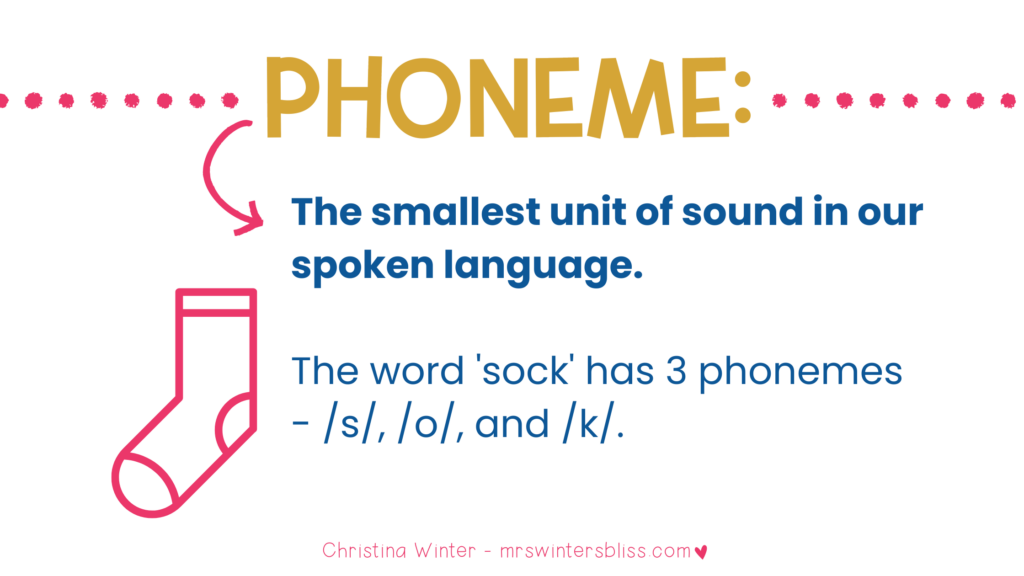
Grapheme: A letter, or group of letters that represent a sound. Graphemes may consist of up to four letters. Examples: b, sh, ch, igh, eigh.
Morpheme: The smallest meaningful units of language. The word cat is a morpheme. Not all morphemes stand alone as words; some are attached to words, usually as affixes. These are called bound morphemes. Examples include: non-, -est, -ing, -er, -ion.
Phonics Terms that Describe Graphemes
Digraph: Two letters that represent one speech sound. Examples: sh, ch, th, ph.
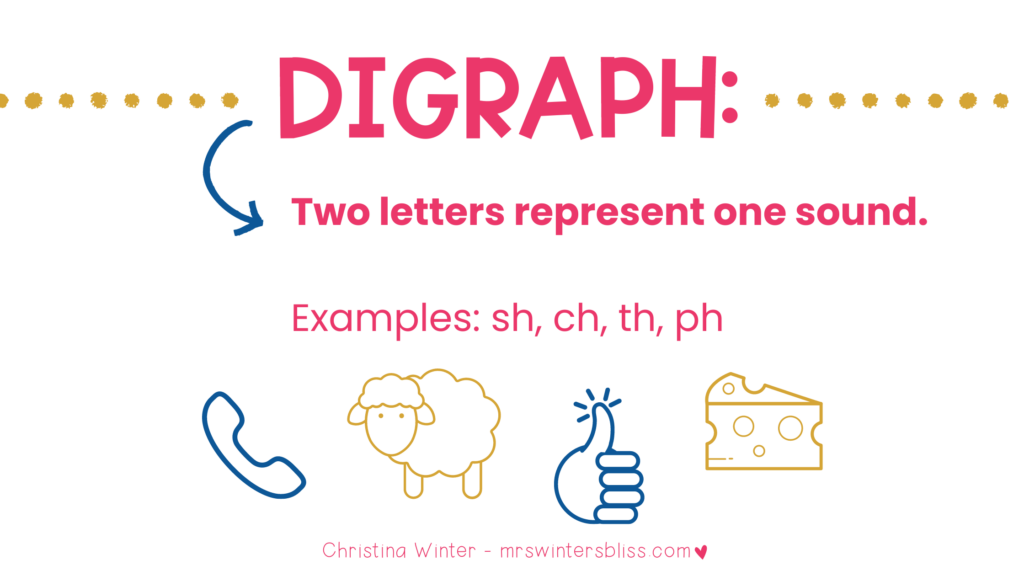
Diphthong: A sound formed by combining two vowels in a single syllable. The sound begins as one vowel sound and moves towards another. The two most common diphthongs in the English language are the letter combination “oy”/“oi”, as in “boy” or “coin”, and “ow”/ “ou”, as in “cloud” or “cow”.
Vowel team: Two or more letters that represent a single vowel sound, such as ‘ow’ or ‘igh’.
R-Controlled Vowels: Vowels that are followed by the letter r, where the letter r changes the sound of the vowel. For example, in the word cat, the vowel makes the short a sound. But in the word car, the sound of the vowel is a bit different because of the r following it. This is sometimes referred to as the “bossy r” because it “bosses around” the vowel.
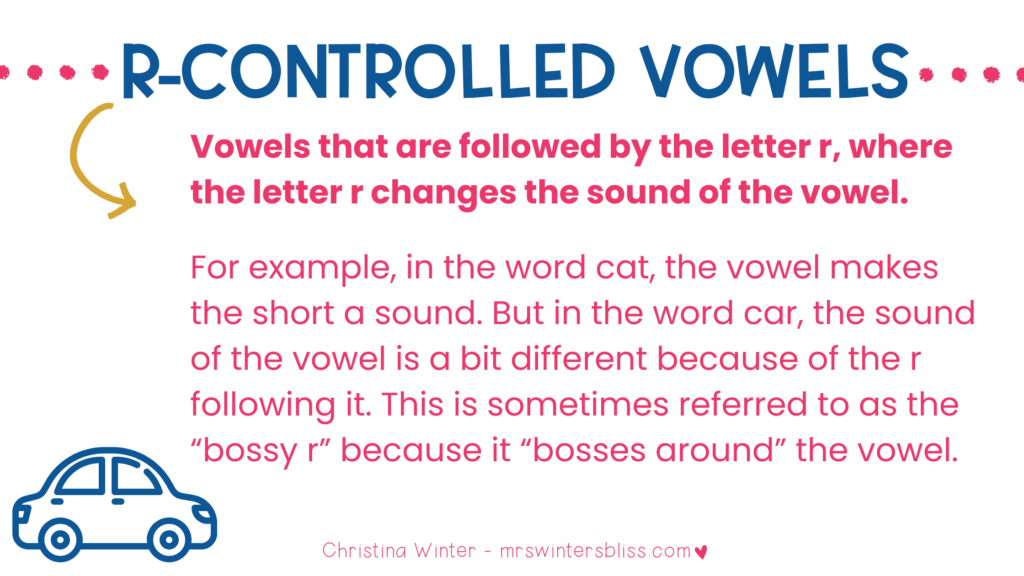
Consonant Clusters: Two or more consonants (letters that are not vowels) strung together. Though they are blended together, you can still hear each individual consonant sound. Examples of consonant clusters include the (str-) in strap and the (pl-) in play.
Beginning Blend or Initial Blend: A consonant cluster that appears at the beginning of a word. Examples include: are the (br-) in bread, the (sn-) in snake, and the (cl-) in cloud.
Onset and Rime: Onset is the part of a single-syllable word before the vowel. Rime is the part of a word including the vowel and the letters that follow. In the word “cat” /c/ is the onset and /at/ is the rime.
Other Common Phonics Terms and Definitions
Blending: The process of identifying the sounds in a word and stringing them together to read the whole word. Read more about the different types of blending here.
Segmenting: Breaking up a word into its individual sounds. The opposite of blending.
Schwa: Schwa is the most common vowel sound in the English language. It sounds like the short u or sometimes short i vowel sound. Any of the vowels can present the schwa sound, even some vowel pairs. The schwa sound is represented by /Ə/. Read more about the schwa sound here.
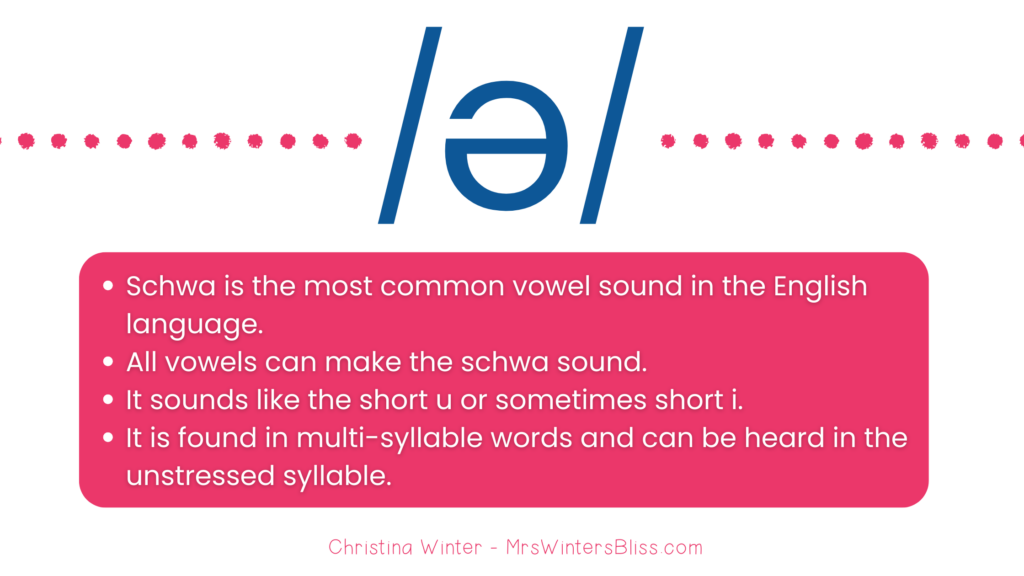
Encoding: Using individual sounds to build/spell and write words
Decoding: Translating printed words to sounds or reading.
FREE Phonics Terms Cheat Sheet
I have shared a lot of information in this post! To help you keep it organized in one place I am happy to offer this FREE Downloadable Phonics Cheat Sheet. It includes a list of common phonics terms, definitions of the terms, and a clear and concise example of each one. Simply download it, print it out, share it, and refer to it as needed!
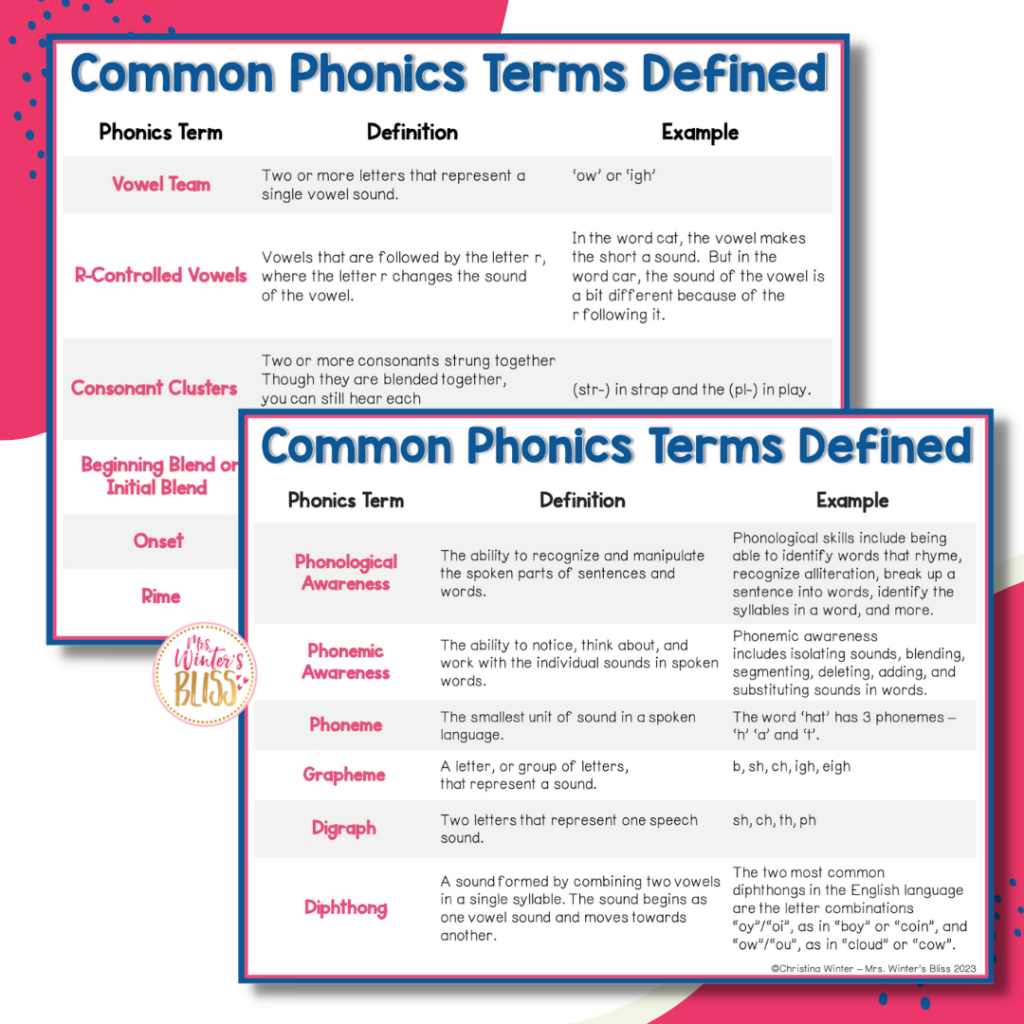
Drop your email below to instantly download this free phonics terms and definitions cheat sheet!
I hope the information I have shared here today will help you have a deeper understanding of the phonics terms frequently referred to in SoR-aligned curriculums and instruction. Be on the lookout for my next post when I will explain some of the most common phonics rules you’ll want to know, understand, and teach your students!









